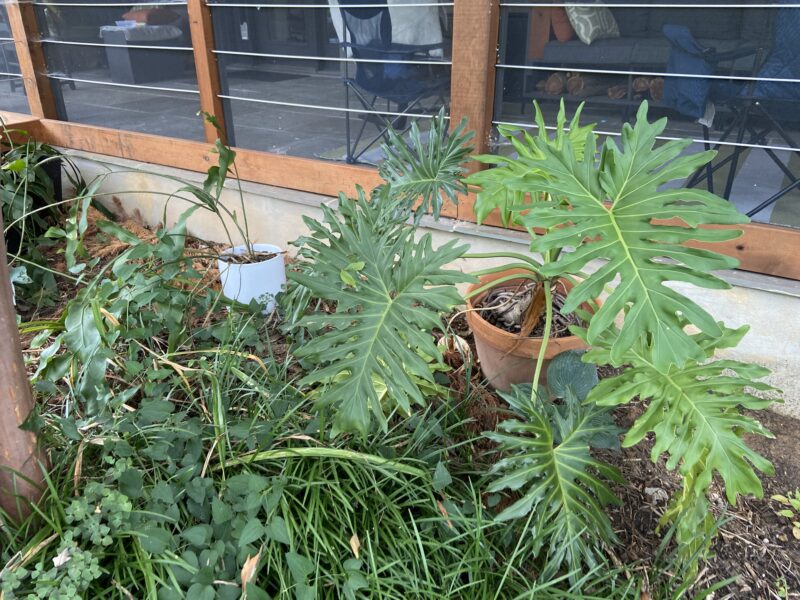Do Your House Plants Need Summer Vacations?
When summer rolls around, everyone deserves a vacation, including your houseplants! After a winter indoors, many houseplants will benefit from some time outdoors when the weather is right. The right light exposure, increased humidity, and fresh air can stimulate new growth and sometimes enhance blooming.

Tips for moving indoor plants outside:
- Make sure the weather is right. Indoor plants shouldn’t go outdoors until night-time temperatures are consistently above 55°F.
- Avoid scorching foliage by starting houseplants in shady sites and gradually exposing them to more sunshine. Some tropicals will do best if kept in a shady location throughout the summer, while succulents will appreciate full sun after a gradual transition.
- Adjust watering needs based on ambient rainfall. Your indoor plants may need more water given the warmer environment, so monitor water levels and supplement as needed. Make sure you remove saucers from underneath plants so excess water will drain away.
- After a summer of active growth, some plants may need repotting before you move them back indoors.
Tips for moving indoor plants back inside:
- Bathe, inspect, and evaluate. Give your plants a good dousing with a hose to remove webs, dust, debris and pests. Thoroughly check foliage front and back for signs of pests. When treating plants for pests, begin by using a mixture of manual removal, horticultural soap, and horticultural oil. However, if the infestation is severe, it might be a good idea to compost them rather than risk infecting other plants.
- Create a schedule. Most houseplants need two things in the winter: regular water and regular pest inspections.
Barbara Pleasant, author of The Complete Houseplant Survival Manual, shared some further tips to help your plants enjoy their summer vacation.
- For most medium and small houseplants, a summer outdoors in a shady spot gives them growing space and warmth, which most houseplants love. At my house, the sweet spot for summering houseplants is the bright shade beneath a second story deck.

A lacy-tree philodendron (Philodendron bipinnatifidum) and a night-blooming cereus (Epiphyllum sp.) in the white pot to its left.
- I always move winter-blooming houseplants like holiday cactus, kalanchoe, and succulents outdoors for the summer. Exposure to long summer days followed by chilly fall nights encourages strong blooming.
- I observe September as houseplant month. Conditions are great for repotting plants outside where you can make a mess, and plants that are divided have time to recover under warm conditions. As plants are moved back indoors, each one gets a trim, a shower, and repotting if needed.
- Not all houseplants like an outdoor vacation, and very large ones can have problems adjusting back to indoor light after spending time outdoors. Tall houseplants are prone to toppling over in thunderstorms, so they require a very sheltered spot. African violets, orchids and a few other houseplants simply prefer staying in.
For houseplant and gardening expertise, check out more of Barbara Pleasant’s work.
Photos courtesy of David Ellis, Editor of The American Gardener
https://www.southernliving.com/garden/indoors/moving-houseplants-outdoors-in-summer
https://hortnews.extension.iastate.edu/moving-indoor-plants-outside-summer